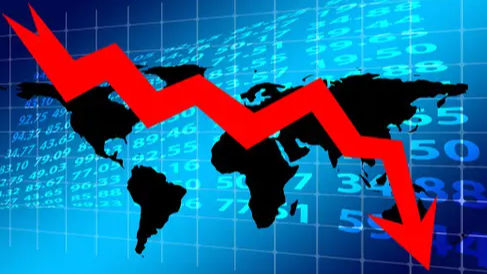A lot of variables have combined in the last 18 months to produce a deadly cocktail for the global economy. The US over-stimulated its economy in reaction to the COVID-19 pandemic, causing inflation not just within its borders but also beyond them, as consumers’ insatiable desire for commodities clogged the world’s supply systems. China’s efforts to contain the COVID-19 pandemic worsen these issues.
Also Read | Why Big Tech mergers are bad news for everyday consumers
Following Russia’s invasion of Ukraine, commodity prices skyrocketed. In reaction to the resulting inflation, about four-fifths of the central banks around the world have hiked interest rates by an average of 1.5 percentage points this year, prompting stock markets to plummet. After a meeting that concludes on July 27th, the Federal Reserve is anticipated to hike rates for the fourth time this cycle, by three-quarters of a percentage point.
Also Read | What is the difference between WPI and CPI?
On July 14th, Steven Blitz of TS Lombard, an investment-research firm, anticipated a recession in the world’s largest economy this year, a day after Bank of America issued the same prediction. Another bank, Goldman Sachs, believes Germany’s GDP dropped in the second quarter and would do so again in the third. Google searches for “recession” among Americans are at an all-time high.
The main cause of recession concerns is worry over the potential effects of monetary tightening. Wage rise in the developed world is far too rapid in comparison to productivity growth. However, there is a chance that increased prices will simply put an end to the celebration rather than make it raucous.
Also Read | Japan’s inflation remains above central bank’s 2% target
In this aspect, history is not promising. Since 1955, just three times have interest rates in America risen as much as they are predicted to this year: 1973, 1979, and 1981. Within six months, each case had a recession.
Since the heady days of mid-2021, when COVID restrictions were being swiftly relaxed and excitement about the future was building, the economies of the rich world, which make up about 60% of the global GDP, have unquestionably declined. Goldman Sachs develops a “current activity indicator,” which is a high-frequency gauge of economic health based on various surveys and data.
Also Read | RBI ready to spend up to $100 billion more to protect rupee: report
The gauge has noticeably slowed in recent weeks. Nicolas Woloszko of the Organization for Economic Cooperation and Development has created a measure of weekly GDP using Google search data. He notices that the wealthy world’s GDP has been weakening in recent weeks. Surveys of companies in the eurozone and America issued on July 22nd by data source Standard & Poor Global made for depressing reading, with manufacturers more pessimistic than at any time since the pandemic’s start.
Also Read | Rupee hits all-time low of 80; why is it falling?
It appears too soon to call a recession, even if, as some predict, America’s statisticians report on July 28th that the world’s largest economy declined for the second quarter in a row between April and June. By one standard definition, this qualifies as a recession, but it fails the Smell Test. Even though the economy’s underlying performance was robust, a series of one-time events caused the American GDP to contract in the first quarter. Furthermore, it would be early for the Fed’s tightening to have had an impact.
Also Read | What is Insolvency and Bankruptcy Code (Amendment) Bill 2021?
Governments throughout the world are also distributing funds to assist the poor deal with soaring energy prices. Governments in the eurozone are boosting the economy by the equivalent of approximately 1% of GDP. Britain is withdrawing budgetary support given during the pandemic, which is slowing GDP, but it is still providing subsidies to poor households.
Also Read | How to survive a market crash
The slowdown in investment has historically played a significant role in economic crises: in recession time for the G7 group of major economies since the 1980s, declining capital spending has accounted for over half of the fall in total GDP in negative quarters. According to JP Morgan statistics for America, the eurozone, and Japan, investment data has decreased this time, although not catastrophically.
Capital investment increased dramatically in late 2021 and early 2022, as companies invested heavily in remote-working technologies and strengthened supply lines. Some companies now fear they have overinvested in additional supply capacity. Others want to save money.
Also Read | Why US inflation is going up and when will it come down
According to Oxford Economics’ examination of survey data, financial markets, credit conditions, and corporate liquidity, investment in the G7 might fall at an annualised rate of roughly 0.5% in the second half of this year. That is unfavourable, but not sufficient to initiate a recession on its own. Investment decreases have been steeper in previous recessions, for instance.
However, positive economic statistics can only provide confidence when investors’ primary concern is monetary tightening. Currently, it appears that any report can transmit terrible news regarding a recession. Weak data confirms that a slump is on the way. Strong indicators, especially wage increases, show that central banks are unable to slow things down, necessitating additional tightening, which might lead to a recession.
Also Read | US inflation rate at a 40-year high | A timeline: 1930-2022
Even if economists are faced with a mass of data, an old lesson—that recessions are difficult to identify in real-time might still be relevant. The National Bureau of Economic Research dates the start of America’s slump related to the global financial crisis to December 2007. However, the Fed’s staff believed the economy was still expanding at a 2% annual rate in August 2008.
Also Read | Impact of US Feds’ biggest rate hike since 1994 on India
The IMF stated that a severe recession was “not necessarily” coming to America even after Lehman Brothers collapsed later in the year. Understanding the economy is difficult even in the best of circumstances; this time, the post-lockdown economy has been full of shocks. Nobody could have expected that labour shortages would arise last year, or that inflation would worsen in 2022.







